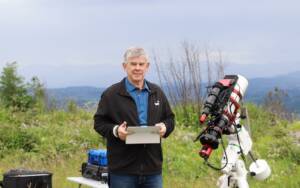
A Retirement Spent Under the Stars: Bogdan Vuk’s Astrophotography Journey
“Astrophotography is a connection with nature, a look into space, into things we can’t see with the naked eye. It’s nice to sit in the evening under the sky next
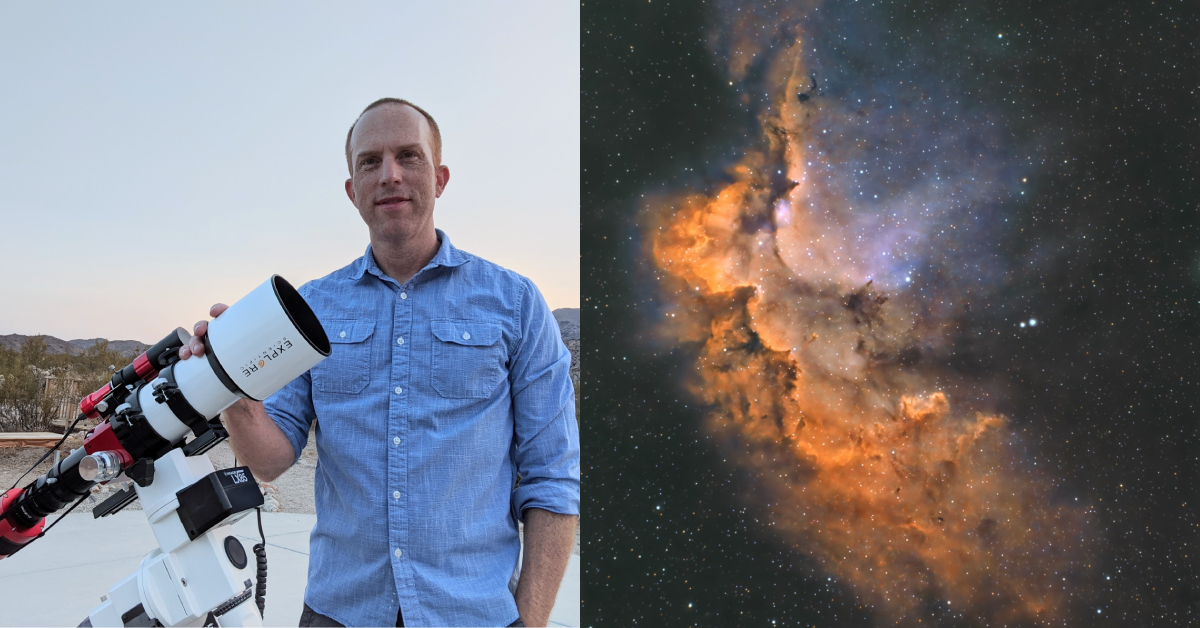
Chad is the winner of ZWO ASIWEEK #40/2020, he lives in Washington, DC, USA where the Bortle scale is at level 8.
My name is Chad Leader. I am a 43-year-old musician currently living in the Washington, DC area. I enjoy astronomy, music composition and performance, hiking, and traveling.

I began astrophotography a little over a year ago in July of 2019. I bought a used Celestron Edge HD 8” with an AVX mount. Prior to that, I owned a Celestron Nextar 127 SLT that I used for planetary observation.

The Triangulum Galaxy (M33). Equipment: Celestron Edge HD 8 with 0.7x reducer, Sky-Watcher EQ6-R Pro mount, ASI294MC Pro, ASIair Pro. 48 x 300s with Baader UV/IR filter plus 42 x 300s with Optolong L-eNhance filter = 7.5 hours of integration. Bortle 8 skies.
I currently have two setups for astrophotography. My main setup is my Edge HD 8 on a Sky-Watcher EQ6-R Pro mount. I use it in two configurations: with the 0.7x reducer for a focal length of 1422mm (at f/7), and with the Hyperstar lens for a focal length of 390mm (at f/1.9). The second setup is a much lighter rig for travel. It is an Explore Scientific ES ED80 that I use with a Hotech SCA flattener or Starizona APEX 0.65x reducer. I’ve been using it on a Meade LX85 or my AVX mount. My imaging cameras are the ZWO ASI294MC Pro and the ASI533MC Pro, and my guide cameras are an ASI174MM Mini and an ASI120MM Mini. I’m using a ZWO EAF on both, and I’m using the ASIAIR PRO to acquire images and control guiding.

Both rigs, ready to image from my backyard.

The Bat Nebula (IC 1340). Equipment: Celestron Edge HD 8 with 0.7x reducer, Sky-Watcher EQ6-R pro mount, Optolong L-eNhance filter, ASI294MC Pro, and ASIAIR RRO. 6.9 hours of integration (five-minute exposures). Bortle 8 skies.

The Shark Nebula (LDN 1235). Equipment: Explore Scientific ES ED80 with Starizona APEX 0.65x reducer, Meade LX85 mount, no filter (broadband), ASI294MC Pro, and ASIAIR PRO. 1.9 hours of integration (two-minute exposures). Bortle 4 skies.
I shot this picture over two consecutive nights in August using my Edge HD 8, 0.7x reducer, Optolong L-eNhance filter, and an ASI294MC Pro. Framing the target was a challenge. It was difficult to see precisely where it was in the field of view, even with 60-second test exposures at bin 2. I took my time and framed it exactly where I wanted using 180s exposures. Framing is crucial for this nebula with my smaller field of view. Once framed, I setup an autorun sequence to take 300s exposures. The ASI294 was cooled to 0°C and the gain was set at 250. The first night didn’t go so well, as dew formed on the corrector plate and ruined about two hours of subs. The second night, I utilized my dew strap on the OTA to mitigate the dew issue. Seeing conditions were also much better on the second night. I ended up with a total of 97 300-second exposures, which equates to 8.1 hours of integration time.

The Wizard Nebula (NGC 7380). Equipment: Celestron Edge HD 8 with 0.7x reducer, Sky-Watcher EQ6-R pro mount, Optolong L-eNhance filter, ASI294MC Pro, and ASIAIR PRO. 8.1 hours of integration (five-minute exposures). Bortle 8 skies.
Most of my astrophotography is done from my backyard. The skies are terrible, unfortunately. I live about one mile outside of Washington, DC in a bortle 8-9 white zone. Learning how to work around light pollution has been one of the biggest challenges of this hobby for me. It’s always a treat when I can make it out to darker skies.

Pickering’s Triangle (NGC 6979). Equipment: Celestron Edge HD 8 with 0.7x reducer, Sky-Watcher EQ6-R pro mount, Optolong L-eNhance filter, ASI294MC Pro, and ASIair Pro. 5.75 hours of integration (five-minute exposures). Bortle 8 skies.
I chose the ASI533MC Pro because the pixel size was a better match for my Hyperstar setup than the ASI294MC Pro. The 294 was slightly under-sampled with the Hyperstar, offering a resolution of roughly 2.39”/pixel. The 533 offers about 1.94”/pixel resolution on that setup. I also looked at how a lot of targets would frame up with the square sensor, and thought it seemed logical. One of the first pictures I took with the 533 and Hyperstar setup was the Rosette Nebula:

The Rosette Nebula (Caldwell 49). Equipment: Celestron Edge HD 8 with Hyperstar v4, Sky-Watcher EQ6-R Pro mount, Optolong L-eNhance filter, ASI533MC Pro, and ASIAIR PRO. 3.5 hours of integration (one-minute exposures). Bortle 8 skies.
The evening I captured this picture, I was participating in a “virtual” Zoom star party hosted by my local astronomy club (Astronomical Society of Greenbelt). I was using my f/1.9 Hyperstar setup along with the “Live” feature on the ASIAIR PRO to quickly produce images for the other participants. I produced a 20-minute live stack (one-minute subs) of the Elephant’s Trunk Nebula for the star party that looked pretty good, so after the star party ended I decided to slew back to the target and set up an autorun sequence with dithering for the remainder of the evening. The ASI533MC Pro was cooled to 0°C and gain was set at 200. I was able to get 229 subs at 60s for a total of 3.8 hours of integration. It was an exceptionally clear night.

The Elephant’s Trunk Nebula (IC 1396). Equipment: Celestron Edge HD 8 with Hyperstar v4, Sky-Watcher EQ6-R Pro mount, Optolong L-eNhance filter, ASI533MC Pro, and ASIAIR PRO. 3.8 hours of integration (one-minute exposures). Bortle 8 skies.
I am currently considering the new ASI294MM Pro mono camera. I really admire a lot of the SHO pictures I’ve seen and the extraordinary details that are captured using mono with narrowband in light pollution. It seems like the next logical step for me, as I’ve been using an OSC camera from the beginning. I have to say, though, that OSC cameras are extremely convenient, and with the right techniques they can produce equally impressive photos.

The Pleiades (M45). Equipment: Explore Scientific ED80 with Starizona APEX 0.65x reducer, Meade LX85 mount, Astronomik L-2 UV/IR cut filter, ASI294MC Pro, and ASIAIR PRO. 3 hours of integration (120s exposures). Bortle 2 skies.
I use Pixinsight and Topaz Denoise and Studio. There is definitely a learning curve with these software programs. I can see why some newcomers to astrophotography may get frustrated and give up; however, post-processing is one of the most important parts of the hobby. Having the ability to pull out details and colors to maximize your data and create a unique astro photo is extremely rewarding. Learning to use the software effectively takes time, much like learning to play a musical instrument. I learn something new about post-processing every session – it never ends.

The North America Nebula Nebula (NGC 7000). Equipment: Explore Scientific ES ED80 with Starizona APEX 0.65x reducer, Meade LX85 mount, Optolong L-eNhance filter, ASI294MC Pro, and ASIair Pro. 5 hours of integration (two-minute exposures). Bortle 8 skies.
I would suggest that beginners focus on perfecting data acquisition techniques first. Make sure your setup is tuned in, with a flat field and pinpoint stars. Learn how to set your gain and exposure times. Research how to properly calibrate your light frames. Why? Because you can always re-visit quality, properly calibrated data when your post-processing skills improve over time. Re-processing old data on the nights when clouds prevent you from acquiring new data is a great way to practice and improve in this hobby.

The Whirlpool Galaxy (M51). Equipment: Celestron Edge HD 8 with 0.7x reducer, Sky-Watcher EQ6-R Pro mount, no filter (broadband), ASI533MC Pro, and ASIAIR PRO. 6.8 hours of integration (240s exposures). Bortle 8 skies.
I would love to be able to contribute to the scientific community. It’s difficult to compete with all of the sophisticated equipment present in the major observatories and the numerous space-based surveys. As DSO astrophotographers, I think we are acquiring qualitative data that also happens to be beautiful. While our pictures often do not provide any new scientific information, they do contain interesting and accurate data that can be appreciated visually. This is why I’m drawn to astrophotography – it is a fusion of science and art, which is a rarity in life.

My first attempt at the Andromeda Galaxy (M31) from 2019. Equipment: Explore Scientific ES ED80 with Hotech SCA flattener, Celestron AVX mount, no filter, ASI294MC Pro. 2 hours of integration (one-minute exposures). Bortle 2 skies.
CMOS camera technology is already amazing! One thing I would like to see become available to amateur astrophotographers in the future is affordable, effective adaptive optics systems. CMOS wavefront sensors could play an important role in making this possible.
I’m currently on vacation in California, and I’m hoping to do some imaging from a bortle 2 location with my ES ED80 setup. Unfortunately, the smoke from the wildfires is obscuring the skies here, making it impossible to image. If it clears before I leave, I’m hoping to image some dark nebulae in Cepheus, including the Iris Nebula and the Seahorse Nebula. I’d also like to image the Pleiades using the ASI294MC Pro with the Starizona APEX 0.65x reducer.

The Bubble Nebula (NGC 7635). Equipment: Celestron Edge HD 8 with 0.7x reducer, Sky-Watcher EQ6-R Pro mount, Optolong L-eNhance filter, ASI533MC Pro, and ASIair Pro. 5.83 hours of integration (300s exposures). Bortle 8 skies.
ZWO is a great company -and I’m not just saying that! I own several of your products, and I’ve been very pleased with the performance of them all. Your innovative designs are based on logic and convenience. Additionally, the ZWO team has been very responsive if I’ve had a question about something. If I had to make a suggestion, it would be to continue developing, improving, and adding features to the ASIAIR PRO, and to continue designing new “problem-solving” hardware gadgets such as the tilter and filter drawer. Items like these have solved and simplified a lot of astrophotography challenges for me.

The Eagle Nebula (M16). Equipment: Celestron Edge HD 8 with 0.7x reducer, Sky-Watcher EQ6-R Pro mount, Optolong L-eNhance filter, ASI533MC Pro, and ASIAIR PRO. 3.4 hours of integration (240s exposures). Bortle 7 skies.

“Astrophotography is a connection with nature, a look into space, into things we can’t see with the naked eye. It’s nice to sit in the evening under the sky next
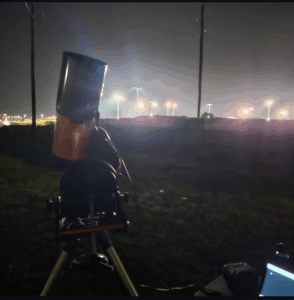
Houston, Texas, USAShooting deep-sky targets from a Bortle 9 zone? Most would say it’s nearly impossible — but not Clint Shimer. Living next to a brightly lit baseball field in
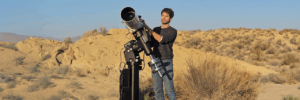
In our third feature with longtime ZWO friend Michael Tzukran, we take a deeper dive into his astrophotography journey, technological evolution, and unforgettable nights under the desert sky. Although many
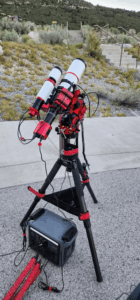
This time, we spoke with astrophotography enthusiast Cody Bancroft, who shared his personal experience of trial, error, and eventually finding clarity through the right gear. When Cody first started astrophotography,
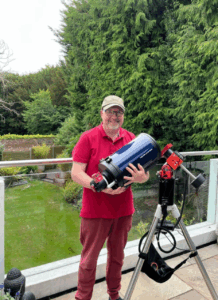
Astrophotographer Callum Wingrove is based in the suburbs of London under Bortle 7 skies, where he primarily images from home using focal lengths between 135mm and 860mm. Earlier this year,
4 Comments
Donald Fortescue
Chad.
Thanks for sharing your work.
I really appreciate how much you’ve achieved in such a short time of developing your astrophotography. It’s very inspiring!
I’m about to relaunch my astronomy fascination with a new Edge 8HD. I haven’t seen many people doing DS imagery with this instrument. Would you be willing to share what equipment you have attached to the 8″ on the image of your rig in this story?
Thank you.
frankhr@yahoo.com
Hi Chad,
I want to outfit my Celestron 8 for astrophotography and I would like to second Donald,s request:
Would you be willing to share what equipment you have attached to the 8″ on the image of your rig in this story?
Thank you.
Jesse Moore
Great read! Thank you for sharing. Did you use a duo narrowband filters? How did you achieve such strong HA and OIII images with only an L optolong filter?
sara.liu
Here is Chad’s astrobin page:https://www.astrobin.com/users/chadleader/
You can visit it and talk to Chad directly; )